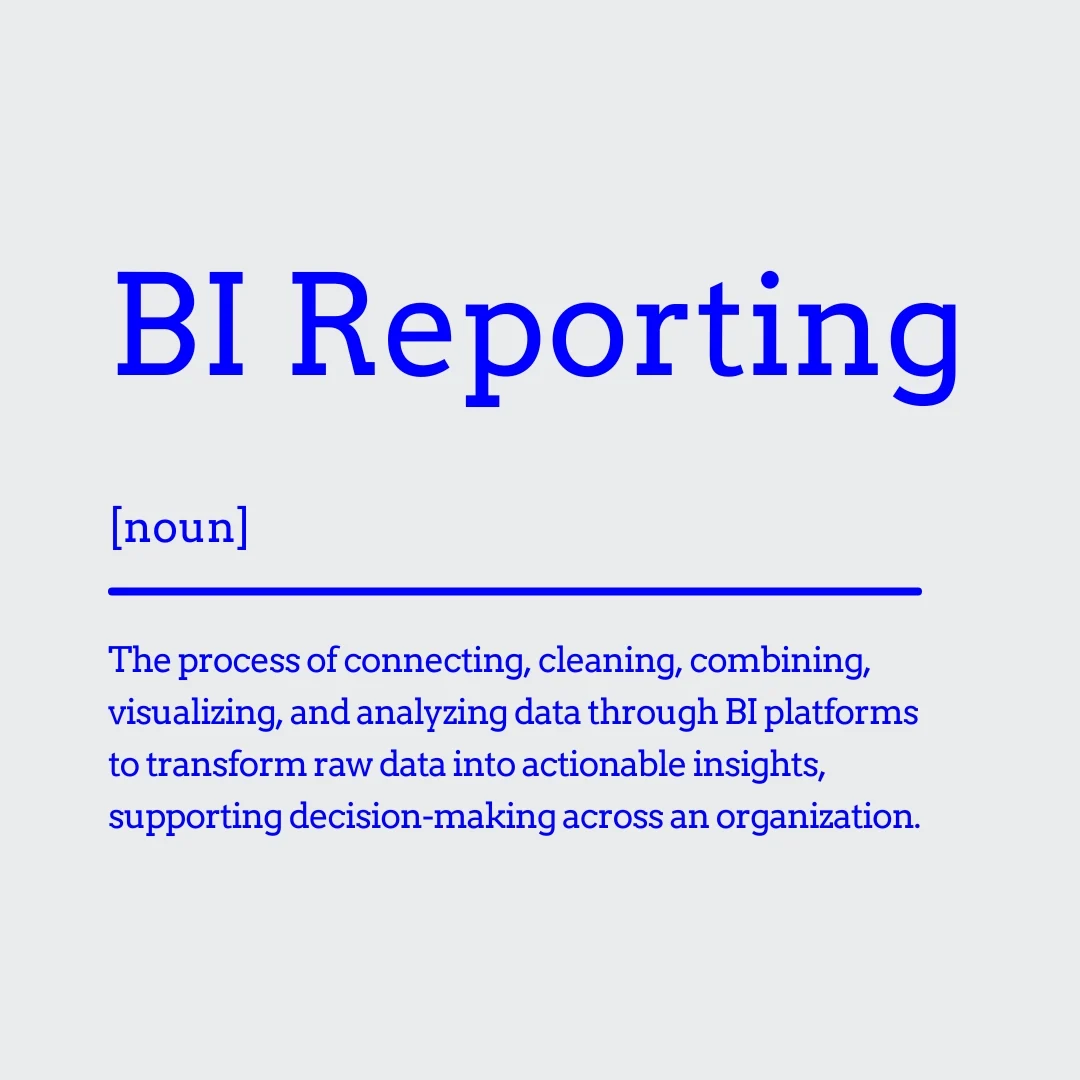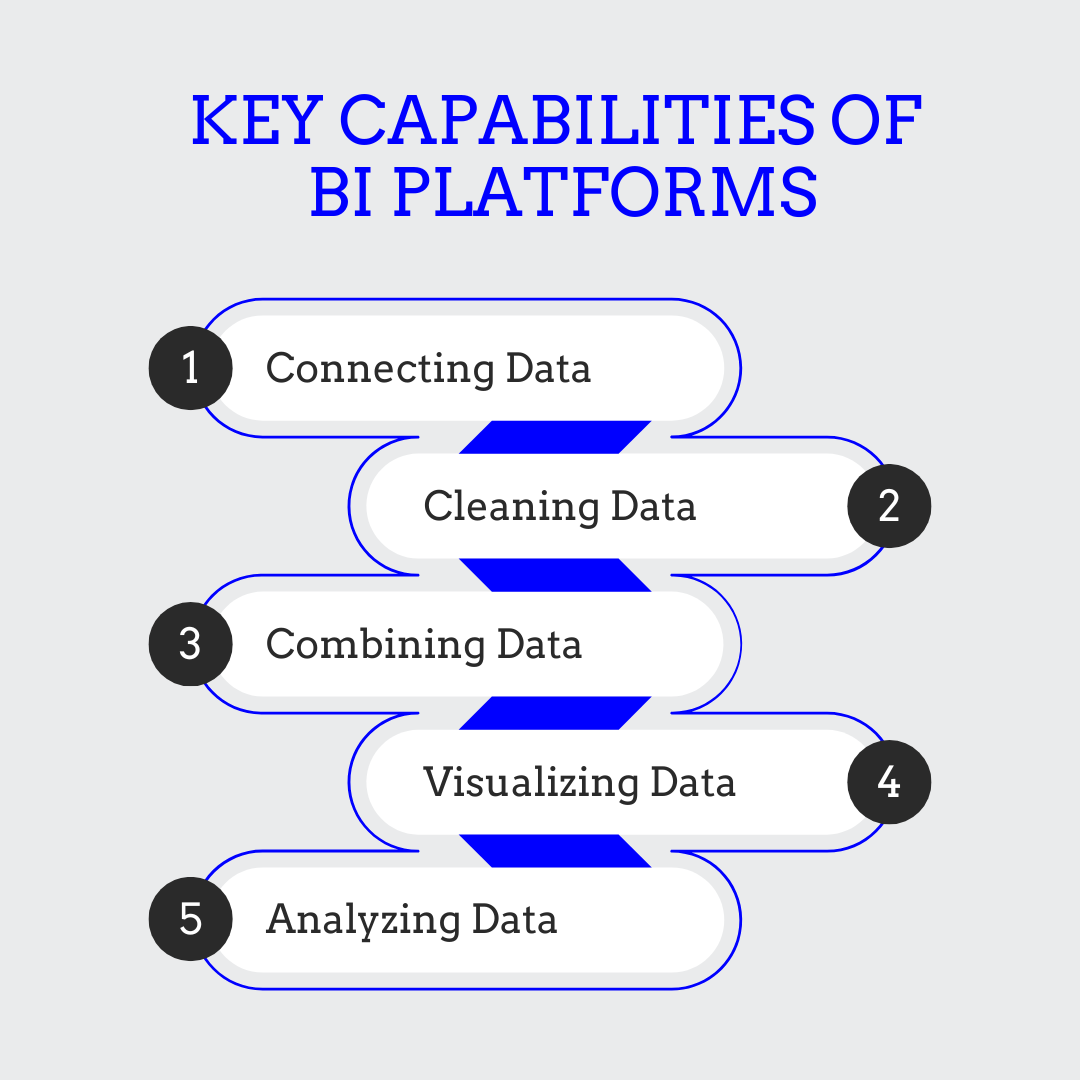Business Intelligence (BI) reporting plays a critical role in helping organizations tackle complex questions and make informed, strategic decisions. By taking the raw data generated from everyday operations and transforming it into meaningful insights, BI reporting empowers stakeholders to uncover trends, track key metrics, and stay ahead in a fast-moving environment. But what exactly is BI reporting, and how does it work?
Understanding BI Reporting: Definition and Purpose

Business Intelligence (BI) reporting is the process of preparing and presenting data to support strategic decision-making. Through BI reporting, raw data is transformed into meaningful insights using BI platforms (like Domo, Tableau, Looker Studio, PowerBI, Metabase, etc.).
Reports and dashboards display data, making trends and patterns easy to understand and act upon. In essence, the goal of BI reporting is to equip key stakeholders with accurate, real-time data, enabling them to make informed decisions more efficiently. By leveraging BI platforms to produce reports, organizations can get more value from their data and gain the insights they need.
Key Capabilities of BI Platforms

BI platforms empower organizations to generate valuable insights through five key capabilities: Connecting, Cleaning, Combining, Visualizing, and Analyzing data. Each capability plays a vital role in turning raw data into meaningful insights for stakeholders.
Connecting Data
BI platforms connect and pull in data from a wide range of data sources, including spreadsheets, cloud storage, and third-party tools like Google Analytics or Facebook Ads Manager. By automatically pulling in data on a scheduled cadence, BI platforms make data readily available for reporting.
Cleaning Data
Following the data connection process, BI platforms support thorough data cleaning, where data is structured and standardized to ensure consistency and accuracy. BI platforms enable you to retitle or remove columns in your data, remove duplicate rows, change data types, and much more. Clean data forms the foundation for reliable BI reporting.
Combining Data
Once data is cleaned, BI platforms enable the combination of data from multiple sources into a single dataset. Combining data allows for a unified view of performance and for comprehensive reporting.
Visualizing Data
With data prepared, BI platforms offer powerful visualization tools, such as charts, heat maps, and graphs. These visualizations can be placed on a dashboard, creating a centralized view that allows stakeholders to monitor key metrics and trends at a glance. Dashboards provide an accessible format for viewing and interacting with data, enabling quick insights and ongoing tracking of important information.
Analyzing Data
Additionally, BI platforms provide the opportunity for robust analysis, allowing users to dive deeper into patterns, trends, and outliers within the reported data. By freeing up time that was previously spent on manual reporting, BI platforms ensure that stakeholders have adequate time to dive into analysis and to produce actionable insights.
Choosing the right BI Platform
Selecting the best BI platform for your organization is a crucial step. We recommend considering each platform’s performance on the capabilities we outline above (i.e. ability to connect, clean, combine, visualize, and analyze data). Price is also an important consideration, as platforms can vary significantly in cost depending on features and scalability. To help you get started, we’ve compared some of the most popular BI platforms in these blog posts:
- Tableau vs Domo: Which BI tool is right for you?
- Looker Studio vs Domo: Which BI tool is right for you?
- Metabase vs Domo: Which BI tool is right for you?
Conclusion
In conclusion, Business Intelligence (BI) reporting is essential for organizations looking to fully harness the power of their data. By connecting, cleaning, combining, visualizing, and analyzing data within a BI platform, BI reporting turns raw data into actionable insights. With clear visualizations and comprehensive reports, BI reporting enables stakeholders to identify trends and make informed decisions that drive success.
If you need help getting started with BI reporting, then you’re in the right place. We help organizations select, set up, and maintain business intelligence platforms. Check out our services today!

